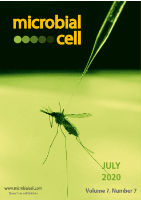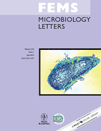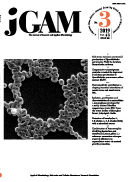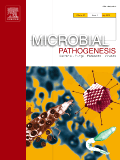
MOLECULAR MICROBIOLOGY
Scope & Guideline
Connecting Discoveries in Molecular Microbiology
Introduction
Aims and Scopes
- Microbial Genetics and Molecular Mechanisms:
Research that explores the genetic basis of microbial functions, including gene regulation, mutation, and the molecular mechanisms underpinning microbial behavior. - Host-Microbe Interactions:
Studies investigating how microorganisms interact with their hosts, including pathogenic interactions, immune evasion, and symbiotic relationships. - Biofilm Formation and Structure:
Research addressing the formation, structure, and dynamics of biofilms, focusing on the molecular and environmental factors that influence biofilm development. - Antimicrobial Resistance:
Exploration of mechanisms of resistance in bacteria and fungi, including the genetic and biochemical bases of resistance to common antibiotics and antifungals. - Metabolic Pathways and Environmental Adaptation:
Studies examining how microbes adapt their metabolic pathways to fluctuating environmental conditions, including nutrient availability and stress responses. - Microbial Ecology and Community Dynamics:
Research focusing on the ecological interactions within microbial communities, their diversity, and their roles in various ecosystems. - Technological Advances in Microbiology:
Innovations in methods and technologies, such as CRISPR and high-throughput sequencing, that enhance our understanding of microbial biology.
Trending and Emerging
- Microbiome Research:
There is a growing emphasis on the study of microbiomes, particularly their roles in health, disease, and environmental interactions, highlighting the importance of microbial communities in various ecosystems. - CRISPR and Gene Editing Technologies:
Research utilizing CRISPR and other gene editing technologies is on the rise, focusing on their applications in microbial genetics, pathogenesis, and biotechnology. - Synthetic Microbiology and Engineering:
Emerging studies in synthetic biology that involve engineering microbial systems for specific functions, including bioremediation and biofuel production, are increasingly featured. - Host-Pathogen Interactions at the Molecular Level:
There is a trend towards detailed investigations of molecular interactions between pathogens and host cells, including the identification of effector proteins and signaling pathways. - Antimicrobial Resistance Mechanisms:
Research into the molecular mechanisms of antimicrobial resistance is expanding, particularly in relation to the development of new therapeutic strategies to combat resistant strains. - Environmental Microbiology and Climate Change:
Studies addressing the impact of climate change on microbial communities and their functions are gaining prominence, reflecting the growing importance of environmental issues in microbiology.
Declining or Waning
- Basic Microbial Physiology:
While foundational studies on microbial physiology remain important, there is a noticeable decline in publications focused solely on basic physiological processes without a link to broader ecological or health implications. - Traditional Pathogen Characterization:
Research that solely characterizes pathogens based on classical methods without integrating modern genomic or proteomic approaches is less frequently published, as newer methodologies become mainstream. - Single-Organism Studies:
There is a waning interest in studies focusing exclusively on single microbial species, as interdisciplinary and multi-species approaches gain traction in understanding complex interactions. - Conventional Antibiotic Testing:
Research centered on traditional methods of antibiotic susceptibility testing is declining in favor of studies that explore novel antimicrobial strategies or mechanisms of resistance. - Static Laboratory Models:
The reliance on static laboratory models for studying microbial behavior is decreasing, as there is a shift towards more dynamic and realistic models that better mimic natural environments.
Similar Journals

JOURNAL OF MICROBIOLOGY AND BIOTECHNOLOGY
Advancing the Frontiers of Microbial InnovationJOURNAL OF MICROBIOLOGY AND BIOTECHNOLOGY, published by the Korean Society for Microbiology and Biotechnology, is a premier academic journal based in South Korea that has been at the forefront of advancing knowledge in the fields of microbiology, biotechnology, and their applied sciences since its inception in 1991. This journal holds a commendable Q2 quartile ranking in key categories, including Applied Microbiology and Biotechnology, showcasing its significant impact within the academic community. With an emphasis on high-quality, peer-reviewed research, the journal aims to disseminate innovative findings that foster deeper understanding and advancements in microbial and biotechnological sciences. Researchers, professionals, and students utilize this journal to stay informed about contemporary developments and to inspire future investigations. Although it is not an open-access journal, its content is accessible through various academic libraries and databases, providing a vital resource for those engaged in cutting-edge research.

ARCHIVES OF MICROBIOLOGY
Empowering Researchers with Cutting-Edge MicrobiologyThe Archives of Microbiology, published by Springer, is a reputable journal in the field of microbiology, serving as a vital platform for the dissemination of groundbreaking research and critical reviews since its inception in 1974. With an ISSN of 0302-8933 and an E-ISSN of 1432-072X, this journal operates out of Germany and maintains a global reach, promoting high-quality scholarship across multiple disciplines, including biochemistry, genetics, and molecular biology, as evidenced by its Q2 ranking in Medicine (miscellaneous) and consistent Q3 placements in other categories in 2023. Although the journal does not offer open access options, its rigorous peer-review process ensures that published articles are of the highest standard, making it an essential resource for researchers, professionals, and students keen on advancing their understanding of microbial sciences. As the journal converges toward 2024, it remains committed to fostering innovative microbiological research and facilitating interdisciplinary dialogue within the scientific community.

Microbial Cell
Advancing the frontiers of microbial science.Microbial Cell is a distinguished open-access journal published by SHARED SCIENCE PUBLISHERS OG, focusing on the dynamic fields of microbiology, biochemistry, and molecular biology. Since its establishment in 2014, Microbial Cell has been at the forefront of disseminating cutting-edge research essential for advancing our understanding of microbial functions and interactions. With a commendable impact factor and ranking in the top quartiles (Q1 and Q2) across several categories, including Applied Microbiology and Biotechnology and Parasitology, this journal serves as an invaluable resource for researchers, professionals, and students alike. It features a comprehensive scope that encompasses the latest findings in genetics, cell biology, and virology, facilitating the academic community's access to high-quality peer-reviewed work. Microbial Cell not only contributes to advancing microbial sciences but also fosters an inclusive platform for knowledge sharing and collaboration in the scientific community.

FEMS MICROBIOLOGY LETTERS
Unveiling the Secrets of MicrobiologyFEMS Microbiology Letters, published by Oxford University Press, is a prestigious international journal dedicated to advancing the understanding of microbiology through concise and impactful research articles. With an ISSN of 0378-1097 and E-ISSN 1574-6968, this journal encompasses a wide range of topics within the fields of genetics, microbiology, and molecular biology, achieving a notable Q3 quartile ranking in these categories as of 2023. As an essential platform for researchers, professionals, and students, FEMS Microbiology Letters invites submissions that contribute valuable insights into microbial behaviors, genetic mechanisms, and innovative methodologies pivotal in the study of microbiology. Although it is not an open-access publication, the journal's rigorous editorial standards ensure high-quality content that is relevant and significant to its audience, furthering scholarly dialogue and collaboration in the vibrant field of microbiological research.

JOURNAL OF BASIC MICROBIOLOGY
Driving Discoveries in Basic MicrobiologyJOURNAL OF BASIC MICROBIOLOGY is a premier publication in the field of microbiology, published by WILEY since 1985. With a significant presence in Germany, this journal encompasses a wide spectrum of research topics, focusing on applied microbiology and biotechnology as well as diverse areas within medicine. Holding a commendable Q2 ranking in both its categories for 2023, it plays a crucial role in disseminating innovative findings and methodologies to the community. Researchers will find it to be an essential platform for sharing high-quality work, where it currently stands at rank #47 in the applied microbiology and biotechnology category, representing the 63rd percentile among international journals. The JOURNAL OF BASIC MICROBIOLOGY caters to a growing audience of professionals and students, offering insights essential for advancement in microbiological research and its applications. While it does not currently offer an Open Access option, it remains an influential outlet for academic excellence, continuously contributing to the development of the field through its rigorous peer-reviewed articles.

TRENDS IN MICROBIOLOGY
Empowering Researchers with Cutting-Edge Microbial KnowledgeTRENDS IN MICROBIOLOGY is a premier academic journal published by CELL PRESS, renowned for its high-impact research contributions in the fields of microbiology, infectious diseases, medical microbiology, and virology. With an impressive impact factor and a notable Scopus ranking—placing it in the top tiers of its categories, including a remarkable Q1 status in multiple disciplines—this journal is essential for researchers, professionals, and students aiming to stay at the forefront of innovative microbial research and ongoing advancements in pathogen biology. Since its inception in 1993, TRENDS IN MICROBIOLOGY has provided a platform for thought-provoking reviews and critical insights, fostering discussions that shape the future of the microbiological sciences. Based in the United Kingdom, TRENDS IN MICROBIOLOGY continues to lead the way in disseminating vital knowledge within the global scientific community.

MICROBIOLOGY AND MOLECULAR BIOLOGY REVIEWS
Bridging Microbial Insights with Molecular InnovationsMICROBIOLOGY AND MOLECULAR BIOLOGY REVIEWS, published by the American Society for Microbiology, is a premier journal dedicated to advancing the fields of microbiology and molecular biology. With an impressive impact factor reflective of its Q1 ranking in categories such as Immunology, Infectious Diseases, and Molecular Biology, this journal consistently showcases high-quality, peer-reviewed articles that contribute to the current understanding of microbial life and molecular mechanisms. Operating since 1997, the journal aims to bridge the gap between microbiological methods and molecular biology applications, making it an essential resource for researchers, professionals, and students alike. Readers can access content through various platforms, ensuring that the latest findings are readily available to the scientific community. With its esteemed reputation, MICROBIOLOGY AND MOLECULAR BIOLOGY REVIEWS remains a leading voice in the exploration of the life sciences, catering to a broad audience deeply invested in unraveling the complexities of microbial and molecular systems.

Microbial Physiology
Fostering Discoveries for Health and SustainabilityMicrobial Physiology is a premier, peer-reviewed journal published by KARGER, dedicated to advancing the field of microbiology through innovative research and reviews. With an ISSN of 2673-1665 and an E-ISSN of 2673-1673, the journal stands out in the academic landscape having established a strong track record since its inception in 2020, converging its scope until 2024. It proudly holds a Q2 category ranking in several key areas including Applied Microbiology and Biotechnology, Biochemistry, and Microbiology, making it an essential resource for researchers and professionals in these disciplines. The journal provides open access options to ensure that cutting-edge findings are widely disseminated, fostering collaboration and knowledge sharing. As a vital contributor to the ongoing discourse in microbial physiology, the journal serves as a platform for novel discoveries and methodologies that can significantly impact health, industry, and environmental sustainability. Located in Basel, Switzerland, it brings together a global community of scholars eager to further explore the complexities of microbial life.

JOURNAL OF GENERAL AND APPLIED MICROBIOLOGY
Innovating biotechnology through rigorous microbial research.JOURNAL OF GENERAL AND APPLIED MICROBIOLOGY, published by the MICROBIOL RES FOUNDATION, is a vital resource in the fields of applied microbiology and biotechnology, as well as in diverse medical applications, serving an academic community dedicated to advancing microbial science. Established in 1955, this journal has a rich history of disseminating innovative research and insights into the intricate world of microorganisms. With an ISSN of 0022-1260 and an E-ISSN of 1349-8037, the journal maintains high scholarly standards and robustness, reflected in its 2023 Scopus rankings placing it in the Q3 and Q4 quartiles within its categories. While primarily based in Japan, the journal engages a global audience, offering valuable contributions that inform both theoretical perspectives and practical applications in microbiology. Despite being a non-open-access publication, it provides pivotal research findings essential for academics, professionals, and students alike, fostering a deeper understanding of microbial impact on health and the environment.

MICROBIAL PATHOGENESIS
Driving Insights into Microbial Disease DynamicsMICROBIAL PATHOGENESIS, published by Academic Press Ltd - Elsevier Science Ltd, is a prominent journal in the fields of Infectious Diseases and Microbiology, with a notable impact factor and classified in the Q2 quartile for both categories as of 2023. Since its inception in 1986, this journal has provided a platform for the dissemination of cutting-edge research that enhances our understanding of microbial infections and their implications in health and disease. The journal is indexed in Scopus, ranking #80 among 344 in Infectious Diseases and #57 among 182 in Microbiology, underscoring its significant contribution to the scientific community. Although it operates under a traditional subscription model, the content is vital for researchers, professionals, and students focused on the dynamics of microbial pathogenesis and the development of innovative therapeutic strategies. The journal's comprehensive scope aims to foster advancements in this critical area of study, bridging the gap between laboratory research and clinical applications.